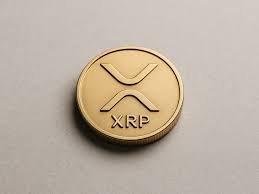
In today’s fast-moving financial world, banks and businesses are constantly searching for faster, cheaper, and more reliable payment systems. Ripple, with its native token XRP, has emerged as one of the leading blockchain-based solutions designed to revolutionize global banking and cross-border transactions. Unlike many cryptocurrencies focused solely on decentralization, Ripple was created with a clear mission: to serve as a bridge between traditional finance and digital innovation.
As global adoption grows, interest in the price of XRP has also intensified. Investors and financial institutions alike want to understand not only how Ripple works but also the real-world use cases that give XRP its value. Let’s break down the most impactful ways Ripple is reshaping the world of payments and banking.
Why Ripple Matters in Global Finance
Traditional cross-border payments rely on outdated systems such as SWIFT, which often take several days to settle transactions. Fees are high, processes are slow, and transparency is limited. Ripple’s blockchain solution directly addresses these challenges by offering near-instant settlement, low transaction costs, and improved liquidity.
This utility is why banks, remittance services, and fintech companies have shown growing interest in Ripple. And for investors, it explains why the price of XRP is often seen as a reflection of Ripple’s adoption in the real world.
Use Case 1: Cross-Border Payments
The most significant use case of Ripple is cross-border money transfers. RippleNet allows banks and financial institutions to move money across countries in seconds instead of days. By using XRP as a bridge currency, Ripple reduces reliance on multiple intermediaries.
For example, instead of converting U.S. dollars to euros through multiple banks, XRP can act as the intermediary, making the process faster and cheaper. This efficiency is a core driver of Ripple’s adoption, and it continues to influence market confidence in the price of XRP.
Use Case 2: Liquidity Management for Banks
Banks often face liquidity issues when moving money across borders, especially in emerging markets. Traditionally, they need to hold large sums of foreign currency (known as nostro and vostro accounts) in different countries, tying up capital.
Ripple’s On-Demand Liquidity (ODL) solution, powered by XRP, eliminates this need. Instead of pre-funding accounts, banks can source liquidity instantly through XRP transactions. This not only saves costs but also frees up billions of dollars for more productive uses.
This practical benefit strengthens Ripple’s role in the financial ecosystem and continues to make the price of XRP an important indicator of future demand.
Use Case 3: Remittances and Payments for Individuals
Remittance services are crucial for millions of people worldwide, especially migrant workers sending money home. Traditional remittance providers often charge high fees and take several days to deliver funds. Ripple offers a faster, cheaper alternative by enabling near-instant money transfers at minimal cost.
For example, a worker in the U.S. can send money to family in the Philippines within seconds using Ripple-powered services, avoiding the high fees charged by traditional providers. The adoption of XRP in this sector highlights how real-world usage can impact the long-term price of XRP.
Use Case 4: Partnerships with Global Financial Institutions
Ripple’s partnerships are one of its strongest assets. Major banks, payment processors, and fintech companies have joined RippleNet to leverage its technology. Institutions such as Santander, SBI Holdings, and American Express have either tested or integrated Ripple’s solutions.
These collaborations validate Ripple’s role in modern finance, while also boosting market confidence. Each new partnership often sparks discussions around the price of XRP, as investors view adoption as a signal of future growth potential.
Use Case 5: Central Bank Digital Currencies (CBDCs)
Ripple has also positioned itself as a potential partner for central banks developing digital currencies. By offering a blockchain that supports efficient settlement and interoperability, Ripple can provide the infrastructure needed for CBDCs.
This emerging use case could further strengthen Ripple’s global presence and shape long-term market confidence in the price of XRP. If governments adopt Ripple’s technology, it would mark a significant step forward in the integration of blockchain into mainstream finance.
Balancing Utility with Market Perception
While Ripple’s utility is clear, it’s important to recognize that crypto markets remain influenced by speculation, regulation, and investor sentiment. The price of XRP does not always move in direct alignment with adoption. External factors such as Ripple’s legal battle with the SEC or broader market conditions can cause volatility.
Still, Ripple’s consistent growth in partnerships and use cases suggests that its foundation remains strong. For investors, tracking both utility and sentiment is crucial in assessing long-term potential.
Conclusion
Ripple’s mission to improve global banking and payments has made it one of the most practical and widely discussed blockchain projects in the world. From enabling faster cross-border payments to providing liquidity solutions and supporting remittances, Ripple is proving its value in real-world finance.
As adoption grows, the price of XRP will remain a key metric for both investors and institutions. While market speculation may create short-term fluctuations, the long-term trajectory of Ripple will likely be shaped by its expanding role in solving real financial challenges.
In the end, Ripple’s use cases highlight a larger truth: blockchain is not just about speculation—it’s about solving problems that impact billions of people worldwide

